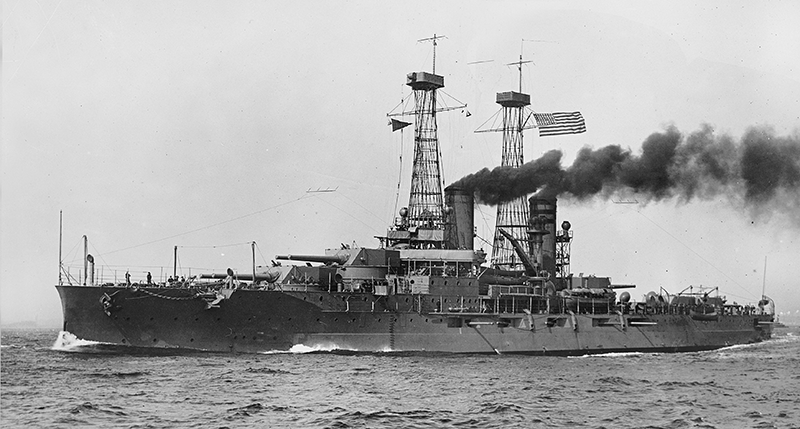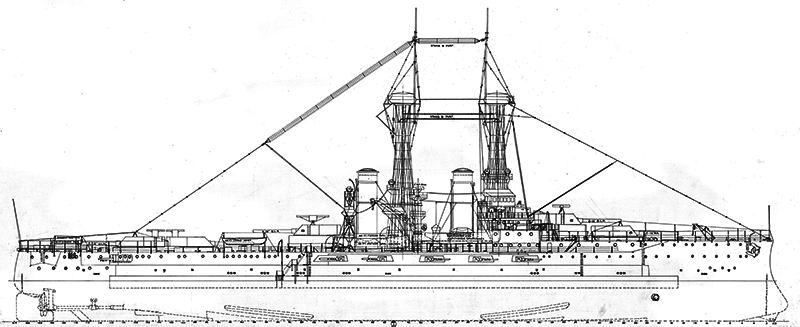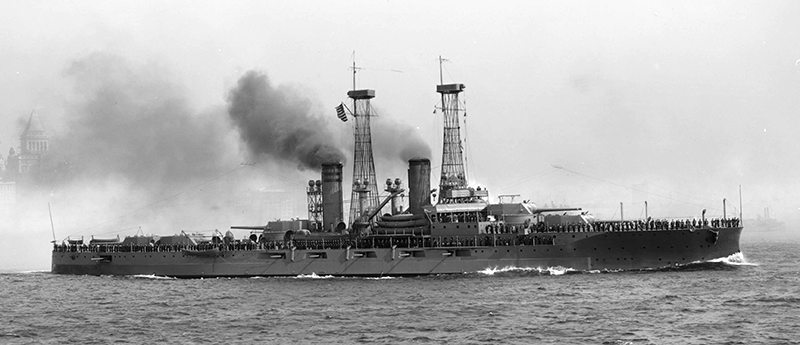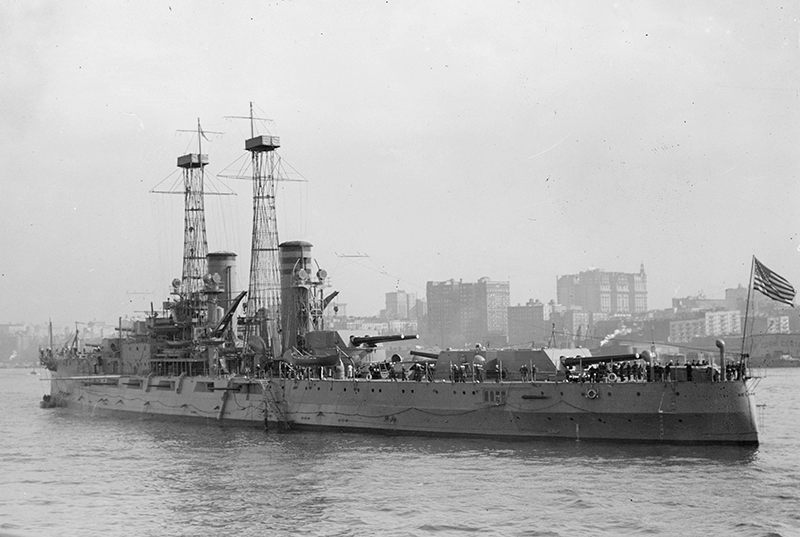

Delaware 1915
|
No |
Name |
Yard No |
Builder |
Laid down |
Launched |
Comm |
Fate |
|
BB28 |
Delaware |
86 |
Newport News |
11.11.1907 |
6.2.1909 |
4.4.1910 |
stricken 11.1923 |
|
BB29 |
North Dakota |
151 |
Fore River, Quincy |
16.12.1907 |
10.11.1909 |
11.4.1910 |
target 5.1924 |
|
Displacement normal, t |
20380 |
|
Displacement full, t |
22440 |
|
Length, m |
155.5 wl 158.2 oa |
|
Breadth, m |
26.0 |
|
Draught, m |
8.30 |
|
No of shafts |
2 |
|
Machinery |
BB28: 2 VTE, 14 Babcock & Wilcox boilers BB29: 2 Curtis steam turbines, 14 Babcock & Wilcox boilers |
|
Power, h. p. |
25000 |
|
Max speed, kts |
21 |
|
Fuel, t |
coal 2670 + oil 380 |
|
Endurance, nm(kts) |
BB28: 9750(10) BB29: 6560(10) |
|
Armour, mm |
belt: 280 - 229, upper belt: 254 - 203, casemate: 127, deck: 51, barbettes: 254 - 102, turrets: 305 (face), CT: 292 |
|
Armament |
5 x 2 - 305/45 Mk V, 14 x 1 - 127/50 Mk VI, 2 - 533 TT (beam) |
|
Complement |
933 |
Project history: The first US battleships to match the standard of the British dreadnoughts, these ships combined the new single-caliber main battery with steam turbines, to achieve the new standard speed of about 21kts. Under the authorizing Act, the Navy had to ask for private designs, comparing them with the C&R design. This procedure delayed the ships until late 1907. Although none of the private designs was even remotely satisfactory, it appears that Fore River later developed its version into what became the Argentine battleship Rivadavia. The Delaware design was actually completed in 1905-06, the Chief Constructor producing both a 10-gun 20500t version and a 12-gun 24000t design. The larger ship was rejected as too expensive for the firepower it provided, even though it was ultimately shaved to 22000t.
The 20500t design was severely criticized. Its secondary battery was carried at gun deck (ie below main deck) level, and the two guns sponsoned out in the bows were not only wet, they also broke up the bow wave and thus wasted power. Pre-dreadnought guns similarly situated were so wet that they could not be used effectively in a seaway, as the fleet learned during its World Cruise in 1907-09. Moreover, the secondary guns were entirely unprotected and additionally practically useless in the heavy weather. In addition, steam lines passed around the magazine of No 3 turret. Although magazine refrigeration was fitted, the magazine could not be kept cool enough, and there was a real fear that its powder might become unstable, particularly in the tropics.
In this class the first attempt was made to do away with permanent bridgework; it was hoped that, even in peacetime, the ships could be operated from within their spacious conning towers. As in the South Carolinas, plans originally showed a pair of military (pole) masts, with a fire control bridge slung between them, itself between the two funnels. When cage masts were adopted, the poles were relegated to the status of kingposts for boat cranes.
The two ships were competitive sisters, Delaware having conventional reciprocating engines, and North Dakota Curtis turbines. At this stage of development, the principal effect of the turbine was a sharp reduction in fuel economy at cruising speed (estimated at 45% at 14kts). Delaware, on the other hand, was the first American battleship that could steam for 24 hours at full speed without needing repairs, even though she had to rely on earlier reciprocating engines. The American reversion to reciprocating engines several classes later is understandable in view of the concentration on very long endurance for Pacific operations.
Ship protection: Main belt had 2.44m height (1.3m over and 1.14m under waterline) abreast citadel was 280mm thick at upper part tapering to 229mm at lower edge. Belt was connected with end barbettes by 254mm bulkheads. There was 2.21m in height upper belt, 254mm at lower and 203mm at upper edges, it was closed by 229mm bulkheads. Upper casemate had 127mm armour and connected with barbettes No2 and 3 by 127mm bulkheads. Flat armoured deck was connected with upper edge of main belt and was 38mm over machinery and 51mm over magazines. This deck had 63mm thickness fwd from citadel to fore compartment and had 38mm thickness to stem. It was 38mm over steering gear. There was an additional lower deck over steering gear, 76mm in flat and 76mm in slopes. Main gun turrets had 305mm faces, 203mm sides and rears and 76mm crowns. Barbettes were 254mm at upper and 102mm at lower edges. CT had 51mm roof. Funnel uptakes were unprotected.
Modernizations: 1917, North Dakota: Curtis steam turbines were changed by Parsons geared steam turbines.
1916, both: + 4 x 1 - 76/52 Mk X
1918, both: + 4 x 1 - 76/52 Mk X
Naval service: Delaware served with the 6th Battle Squadron of the Grand Fleet in 1917-18.

North Dakota

Delaware

North Dakota 1911

Delaware 1912
© Navypedia, 2020